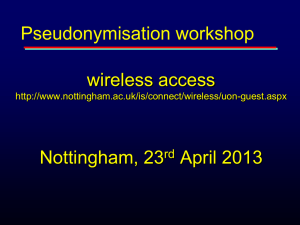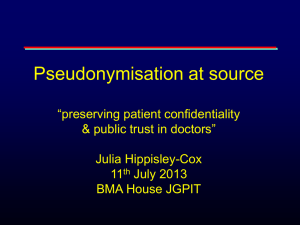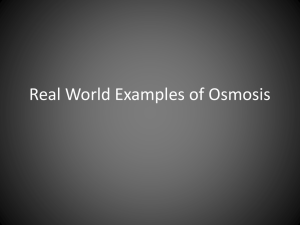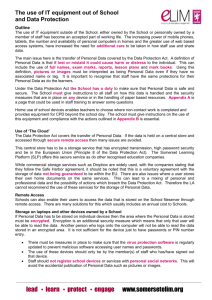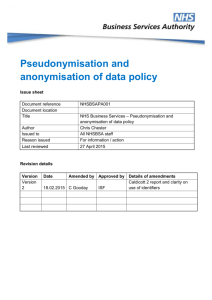The Open Pseudonymisation project
advertisement
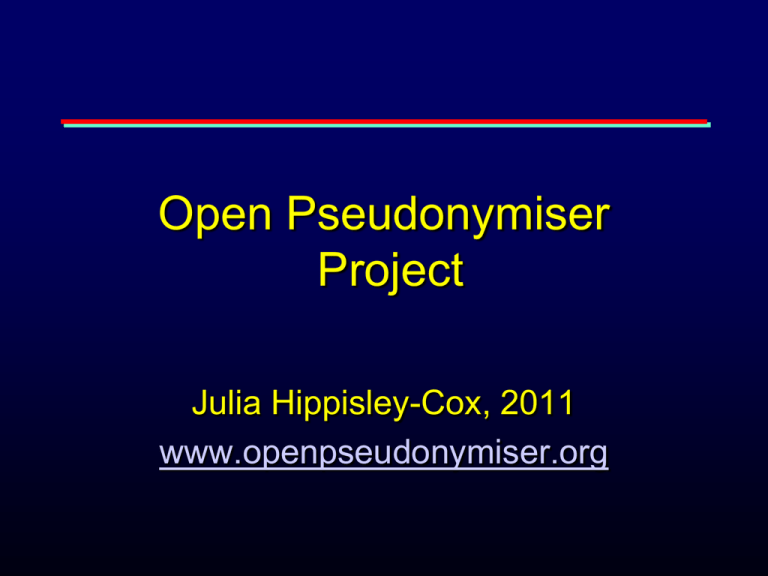
Open Pseudonymiser Project Julia Hippisley-Cox, 2011 www.openpseudonymiser.org Open pseudonymiser approach • Need approach which doesn’t extract identifiable data but still allows linkage • • • • • Legal ethical and NIGB approvals Secure, Scalable Reliable, Affordable Generates ID which are Unique to project Can be used by any set of organisations wishing to share data • Pseudoymisation applied as close as possible to identifiable data ie within clinical systems Pseudonymisation: method • Scrambles NHS number BEFORE extraction from clinical system • Takes NHS number + project specific encrypted ‘salt code’ • One way hashing algorithm (SHA2-256) – no collisions and US standard from 2010 • Applied twice - before leaving clinical system & on receipt by next organisation • Apply identical software to second dataset • Allows two pseudonymised datasets to be linked • Cant be reversed engineered Wed tool to create encrypted salt: proof of concept • Web site private key used to encrypt user defined project specific salt • Encrypted salt distributed to relevant data supplier with identifiable data • Public key in supplier’s software to decrypt salt at run time and concatenate to NHS number (or equivalent) • Hash then applied • Resulting ID then unique to patient within project • Openpseudonymiser.org • Website for evaluation and testing with • • • • • • Desktop application DLL for integration Test data Documentation Utility to generate encrypted salt codes Source code GNU GPL • (note: currently undertaking freedom to operate checks) Key points • Pseudonymisation at source • Instead of extracting identifiers and storing lookup tables/keys centrally, then technology to generate key is stored within the clinical systems • Use of project specific encrypted salted hash ensures secure sets of ID unique to project • Full control of data controller • Can work in addition to existing approaches • Open source technology so transparent & free
